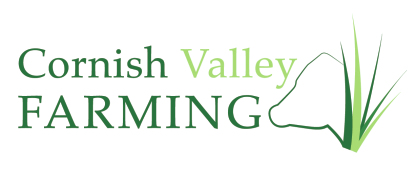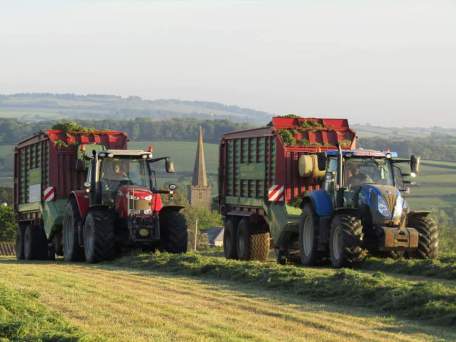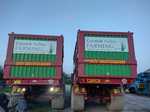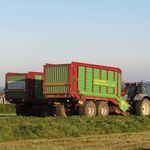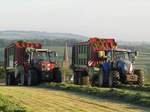Forage Wagon Silaging
Your Low Cost, Low Stress, Low Impact Silaging Solution.
Specialising in Forage Wagon Silaging since 2009.
Whole jobs or part jobs
We offer a variety of options, from a full job (mowing to clamping) or any part thereof, with fewer tractors involved it is easy for us to organise the clamping of smaller areas.
Adding additional output to your current operation
If the weather is pushing you we can add additional output, our self-contained machines can get more grass in your clamp before the weather breaks. Once again our small team is easy to organise and highly reactive, even given short notice we will, in the majority of cases, be on hand to help you out. Hold onto our number in case!
Our machinery
Our two Strautmann wagons are equipped with 710 tyres and a rear steering axles, treading lightly and preventing compaction. Grass is fed through a large single rotor, chopping to a theoretical length of 38 mm (see picture below).
Some long fibre tends to be processed, benefitting diet structure and subsequent cow health and productivity (cusotmers report less Displaced Abomasums and Acidosis). Outputs of 60 acres per wagon per day are common place. Our large buckrake and 2.5t press combination has sufficient capacity to properly consolidate the clamp, improving quality and cutting feed out at waste.
Why use a wagon?
- Reduced cost. A wagon can generally be employed at a lower per acre cost than a self propelled harvesting outfit.
- If you currently clamp first cut and bale the rest consider the cost; a 10t/ac silage crop, yielding 16 600kg bales will cost approximately £128 to bale and wrap (plus the cost of wrap disposal), against a typical wagon and buckrake charge in the region of £30/ac.
- Better animal health. Longer chopped silage promotes cudding, in turn increasing levels of bicarbonate (contained in saliva) and in so doing raising rumen PH, helping to limit issues of sub clinical acidosis. A longer chop also helps create a more fibrous mat in the rumen, slowing the passage of the feed and enabling the animal to extract the maximum nutritional value. Healthier animals utilising feed efficiently results in more milk, meat and money!
- Less waste. Not blowing grass means that there is less in field crop loss, and a slower clamp fill allows the buckrake time to properly consolidate the clamp and prevent spoilage.
The proof of the pudding is in the eating; our own herd of sucklers and fattening cattle are fed on grass only, with finishing cattle reaching carcass weights of 350kgdw at twenty four months old, maximising net margins by focusing on the cheapest feed available: grass.
Call us for a quote
For a no obligation competitive quote and a farm visit to ensure suitability of the system, please contact:
- Rob: 07796 523535 / 01579 349355
